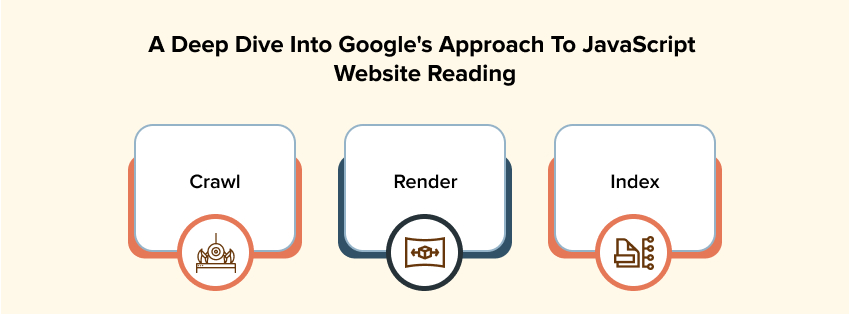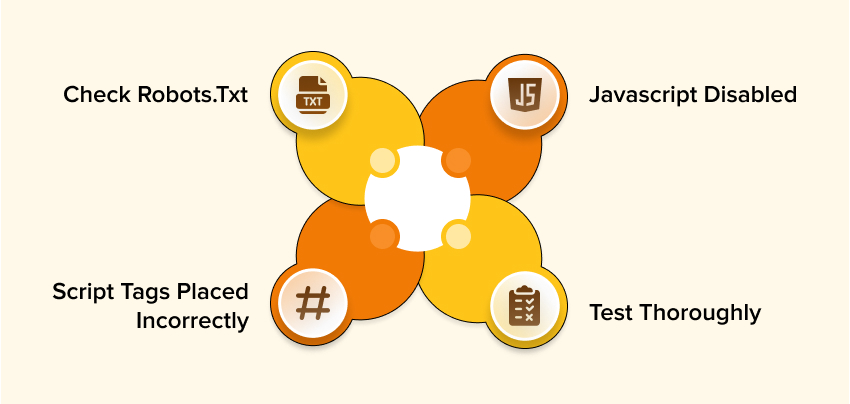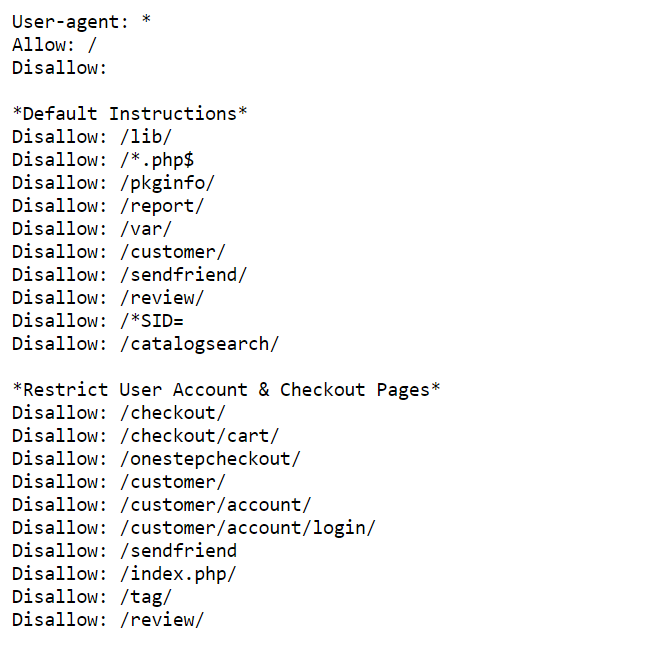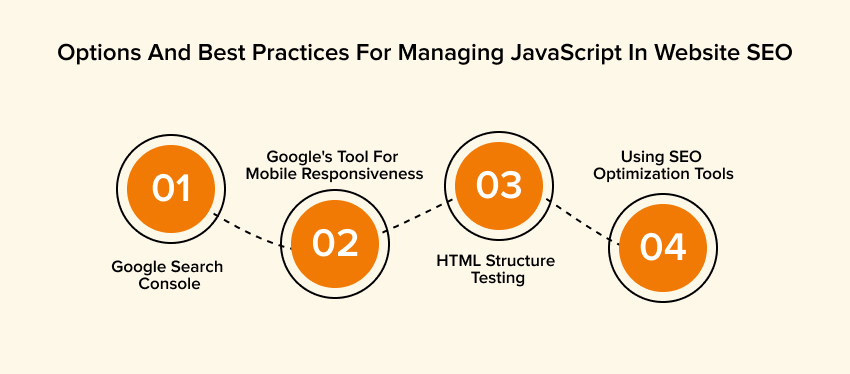Lightweight and robust, Javascript is integral in creating some of the world’s most playful and responsive websites and applications. Javascript helps load websites faster and enhance user experience, making it a versatile and popular scripting language for web, mobile, and Internet of Things applications.

As much as Javascript helps to load websites quickly, it’s also notorious for preventing your website from being discovered by search engines. Nearly every website uses Javascript, and if handled poorly, Javascript could turn into a villain for your website’s visibility on search engines. Read on to make your Javascript-enabled website search-friendly and easier to crawl and index.
What is JavaScript SEO?

Javascript SEO is a set of techniques that allow Javascript to render in line with search engine guidelines so your code is readable and understandable for processing. Search engines need help with problems when your generated code contains duplicate, unclear, or broken links to navigate to your website. Javascript SEO is like making good arrangements for a home buyer. You want to make it easier for them to locate your home address among a sea of houses and make it easy to navigate through the various rooms in your home. Before we head to fix Javascript SEO issues, let’s know how search engines discover your web pages.
Why is it important?
You may have a fast website with a great user experience, but if the search engines can’t discover your website, it doesn’t help to meet your business goals. With the chance to reach millions of active users, a Javascript-optimized website is your gateway to flooding relevant traffic from search engines. Popular search engines like Google rank a fast-loading and user-friendly website higher if they meet the user’s query for relevant content. When implementing Javascript and SEO, plan for the SEO to gain maximum visibility.
How does Google read and render JavaScript websites?

After evolving from downloading an entire HTML response of websites to web page content, search engines today render pages like a web browser does. Google handles JavaScript for rendering SEO in three steps:
- Crawl
- Render
- Index
Crawling:
Google begins by sending the GoogleBot to index websites on the Internet. In this process, GoogleBot sends an HTTP GET request to every website via a mobile user agent, and the server responds with an HTML document.
Rendering:
After listing the resources to crawler javascript, Google tries to render the static HTML to understand the page’s content. Initially, CSS and Javascript files may not be part of the crawl. These resources can be time-intensive to load, so Google initially skips them. Websites are crawled based on the “crawl budget” or the capacity of computing resources for Javascript crawling.
Indexing:
Google’s indexing process includes two waves:
First Wave: This involves indexing the static HTML content instantly whenever it’s available from the initial crawl.
Second Wave: In this phase, Google indexes any additional content rendered via JavaScript. This occurs after JavaScript execution has taken place.
Read:- Understanding Crawlability and Indexability and their Impact on SEO
Tips to avoid search engines from preventing accessing Javascript-enabled websites

Check robots.txt

Ensure your Javascript and other dependent resource file names are not mentioned in the website’s robots.txt file, as it would prevent search engines from accessing them.
Script tags placed incorrectly
Check the placement of Javascript code in your page’s HTML. By placing Javascript code in <script> tags, you ensure your Javascript executes correctly.
Javascript Disabled

Disabling Javascript is an option available to users. Avoid placing critical content or information using Javascript to risk being hidden and never rendered to the end user. With Javascript disabled, if the content or functionality doesn’t not make complete sense to the user or search engines, your website may not be included in the search results.
Test thoroughly
Errors in the code or incompatibility of web components can cause your code to be stuck in loops or crash your website. Thorough testing iteration can prevent execution timeouts and allow the browser to fail to render the HTML.
Best practices for optimizing JavaScript for SEO

Add href attribute to your links

Ensure all your internal pages are linked using the “href” attribute in the anchor tags to make navigating your site easier for Google and other popular search engines. Search engines may not reliably execute JavaScript event handlers when crawling and indexing web pages.
Include images according to web standards
Images must follow web standards for Googlebot to spot easily and index pages. For images, the “src” tag must include the stored image path for page speed optimization.
Using Server-Side Rendering (SSR)
Javascript increases the page loading speed. But when incorrectly optimized, even a fast-loading Javascript page can be noticed in Search Engine Optimization (SEO). By introducing server-side rendering, the HTML is generated before hitting the browser, making it easier for well-known search engines to crawl and index your pages. The only downside is that server-side rendering may cause your page to load slower if there is a lot of processing for every request.
Mobile-responsive design
Popular search engines prioritize mobile-friendly websites in their SERPs. If your website has Javascript, it must be responsive to different devices and screen sizes to stand a better chance of ranking higher. Implement lazy loading for website images and other non-essential resources to enhance your website’s speed.
Canonical tags for preferred page version
If your website uses dynamic URLs, include a canonical tag to specify the preferred page version for the same or similar content.
Test JavaScript in multiple browsers
With the increase in mobile devices, it’s important to test your Javascript-enabled websites on various mobile browsers for smooth rendering on multiple devices, too. Websites free from Javascript errors receive priority in the SERPs.
Regular Javascript monitoring
After introducing newer features with added code, sites may have errors due to multiple components present. Regular testing and monitoring allow you to find and fix errors faster before any penalties from search engines.
Check for Website optimization suggestions
Well-known JavaScript structures utilized in site improvement can upgrade client experience by decreasing load times and keeping up with coding principles. Some JavaScript systems accompany empowering developers to distinguish and address web optimization-related issues.
What options are accessible for overseeing JavaScript for Website SEO?

You can smooth out the method involved with guaranteeing that JavaScript is accurately delivered on search engines through standard site reviews, including recently added pages. Here are a few significant methods:
Google Search Console
This shares any potential issues connected with Googlebot’s association with JavaScript and website design enhancement. It gives reports to assist you with tending to any essential fixes for your site’s JavaScript search engine optimization.
Google’s tool for mobile responsiveness
To determine if your site is responsive, the go-to mechanism is Google’s mobile-friendly test tool. It recognizes what upgrades are expected to guarantee your site shows reliably on all gadgets and screen sizes.
HTML structure testing
Appropriately organized HTML code is significant for further developing your website. This is a well-known asset for assessing whether your HTML code sticks to the vital design to ensure your pages appear in web search tool results.
Using SEO optimization tools
To guarantee that your JavaScript-rich site agrees with all website optimization guidelines, run it through deeply grounded Search engine optimization tools. Try their suggestions to upgrade your site’s design enhancement and user experience.
Final word
JavaScript is a flexible language that improves client experience and speeds up website page loading. Observing and improving JavaScript for search engine optimization can build your site’s reach on the web and web search results pages. By following these tips, you can guarantee your site is without errors and achieve higher rankings in popular search engines.








